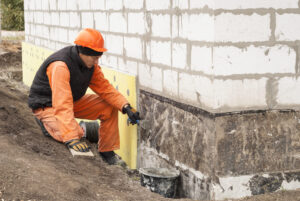A farm’s foundation serves as the backbone of its structural integrity, providing support for buildings, equipment, and the overall operational efficiency of the agricultural enterprise. However, when water damage affects this critical component, it can have severe consequences for both the infrastructure and the farm’s productivity. In this comprehensive guide, we will explore the causes of foundation water damage on farms, its potential impact, and most importantly, the steps farmers can take to address and prevent further harm.
Understanding the Causes of Foundation Water Damage on Farms
Excessive Rainfall and Flooding
Farms situated in flood-prone areas are particularly vulnerable to foundation water damage during heavy rainfall.
Inadequate drainage systems can exacerbate the problem, leading to water pooling around the foundation.
Improper Grading
Poorly graded landscapes can direct water towards the foundation, causing soil erosion and compromising its stability.
Leaking Irrigation Systems
Irrigation systems are essential for farming, but leaks can saturate the soil around the foundation, leading to erosion and damage.
Faulty Plumbing
Leaks in farm buildings’ plumbing systems can contribute to foundation water damage over time.
Assessing the Extent of the Damage
Visual Inspection
Farmers should conduct a thorough visual inspection of the foundation, looking for cracks, bulges, or signs of water infiltration.
Professional Evaluation
Hiring a structural engineer or a foundation repair specialist can provide a more in-depth assessment of the damage and recommend appropriate solutions.
Immediate Steps to Mitigate Further Damage
Water Removal
Use pumps or wet vacuums to remove standing water around the foundation promptly.
Drying the Area
Install dehumidifiers and fans to accelerate the drying process, preventing the growth of mold and further deterioration.
Temporary Support Structures
Implement temporary supports to stabilize the affected areas and prevent further damage while planning for long-term solutions.
Long-Term Restoration and Prevention Strategies
Foundation Repair
Depending on the severity of the damage, professional foundation repair may be necessary, involving techniques such as underpinning or piering.
Improved Drainage Systems
Enhance existing drainage or install new systems to redirect water away from the foundation, reducing the risk of future damage.
Proactive Landscaping
Implement proper grading and landscaping techniques to ensure water flows away from the foundation, protecting it from potential harm.
Regular Inspections
Establish a routine for inspecting the foundation and addressing any issues promptly before they escalate.
Financing the Restoration
Insurance Coverage
Check farm insurance policies to determine coverage for foundation water damage and related restoration costs.
Government Assistance Programs
Investigate potential assistance programs or grants offered by agricultural agencies to help cover restoration expenses.
Conclusion
Foundation water damage poses a significant threat to the stability and longevity of a farm’s infrastructure. Addressing the issue promptly and effectively is crucial to ensuring the farm’s continued success. By understanding the causes, assessing the damage, and implementing both immediate and long-term restoration strategies, farmers can protect their investment and secure the foundation for future agricultural endeavors. Proactive measures, regular inspections, and a commitment to maintaining proper drainage systems will contribute to a resilient and sustainable farming operation, even in the face of unpredictable weather events. In the ever-changing landscape of agriculture, safeguarding the foundation becomes not just a necessity but a key element in fostering the growth and prosperity of the farm.


